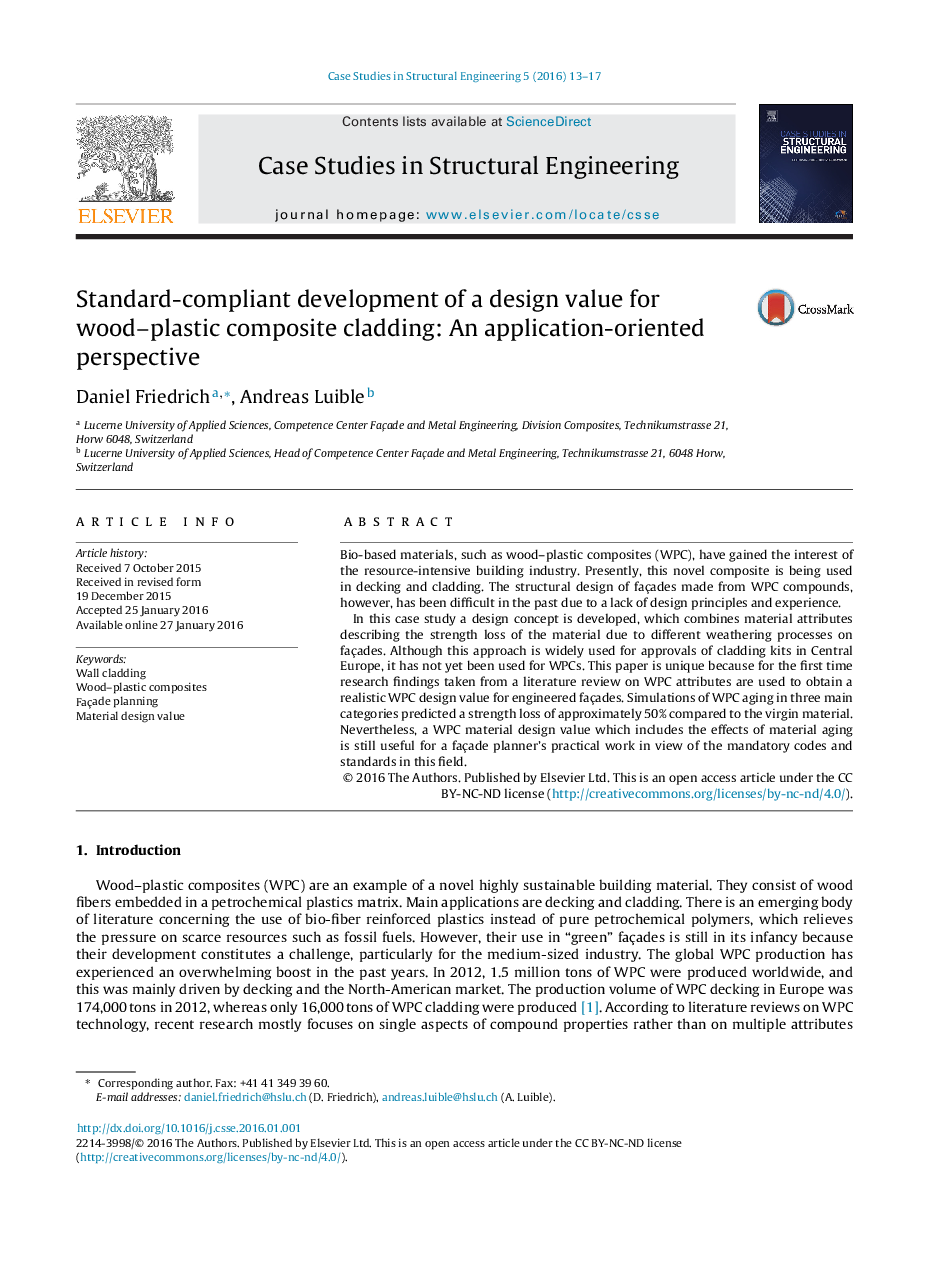| Article ID | Journal | Published Year | Pages | File Type |
|---|---|---|---|---|
| 250590 | Case Studies in Structural Engineering | 2016 | 5 Pages |
•The development of a design-value for wood–plastic composite (WPC) cladding is feasible and it can be derived from normative natural and accelerated weathering trials.•Material degradation of WPC is primary caused by fungi, UV-radiation and freeze–thaw.•The total strength decrease of WPC under these impacts makes up to 50%.•A realistic WPC-cladding design value shows similar extent to comparable façade materials.•Planners can apply such a design-value when assessing the structural fitness of a WPC façade.
Bio-based materials, such as wood–plastic composites (WPC), have gained the interest of the resource-intensive building industry. Presently, this novel composite is being used in decking and cladding. The structural design of façades made from WPC compounds, however, has been difficult in the past due to a lack of design principles and experience.In this case study a design concept is developed, which combines material attributes describing the strength loss of the material due to different weathering processes on façades. Although this approach is widely used for approvals of cladding kits in Central Europe, it has not yet been used for WPCs. This paper is unique because for the first time research findings taken from a literature review on WPC attributes are used to obtain a realistic WPC design value for engineered façades. Simulations of WPC aging in three main categories predicted a strength loss of approximately 50% compared to the virgin material. Nevertheless, a WPC material design value which includes the effects of material aging is still useful for a façade planner’s practical work in view of the mandatory codes and standards in this field.
